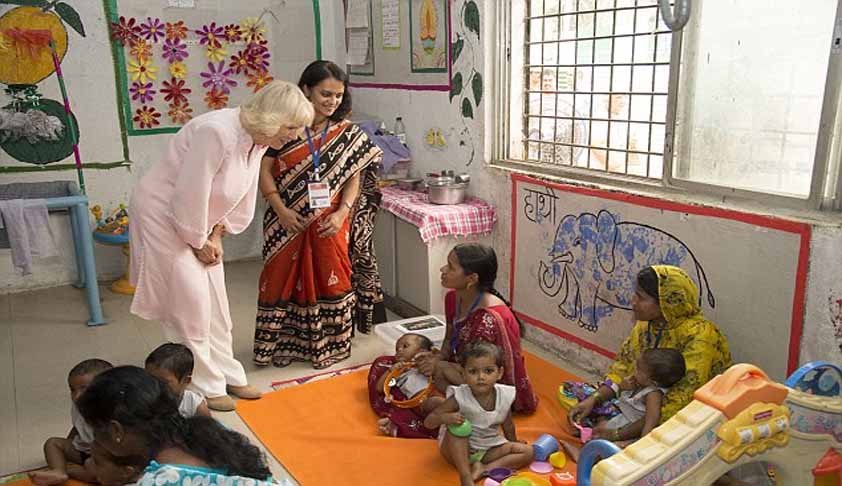Crèche Is Not Kid’s Play: Bridging Gaps – Crèche Facility Under The Maternity Benefit (Amendment) Act, 2017
Gerald Manoharan & Sonakshi Das
22 Jun 2017 10:30 PM IST
The Maternity Benefit (Amendment) Act 2017 (MB Amendment Act) came in force with effect from 1 April 2017. Effective July 1, 2017, the MB Amendment Act makes it mandatory for every establishment having fifty or more employees to provide for a crèche facility. Women employees are to be allowed four visits a day to the crèche, a welcome change guaranteeing working women an additional...
The Maternity Benefit (Amendment) Act 2017 (MB Amendment Act) came in force with effect from 1 April 2017. Effective July 1, 2017, the MB Amendment Act makes it mandatory for every establishment having fifty or more employees to provide for a crèche facility. Women employees are to be allowed four visits a day to the crèche, a welcome change guaranteeing working women an additional protected environment at their workplace. In the recent past, several employers have provided crèche facilities to children of working women employees. However, many other employers are grappling with the nuances of implementing this work space benefit, given that the rules to the MB Amendment Act is yet to be issued. Currently there is a lack of clarity and an absence of identified guideline or structure on the operational requirements for a crèche.
While we understand the Government is yet to come up with the rules which is anticipated to bring to the table more clarity on all grey areas of concern, it will be of more relevance if the rules draw balance between adequate identification as well as clarification on all such concerns. The rules should clearly prescribe a structure on operational parameters for the governance of the crèche. Should the employers, collectively with third party crèche service providers, opt to provide for crèche facility, a clear and precise mechanism for operation, such as provision for safety and security standards, responsibility on compliance with hygiene requirements, qualification of personnel attending the crèche, provision for nursing, etc., should be taken care of. Essentially, an identified and uniform standard of sanitation and cleanliness within the crèche is to be given importance, given the sensitivity of the children involved. The facility should ideally be equipped with manpower who will familiarise themselves with the emotional quotient that is required for providing due care to the children. Likewise, space for adequate ventilation, separate area for recreational activities, may also be considered. Provisions should be provided for twenty four hour surveillance in every section of the crèche along with remote live streaming of footage to the parents.
Provision for crèche facilities under Indian labor laws, are varied. The Factories Act of 1948 provides for crèche facility through suitable rooms for use of children under the age of six years, in every factory employing more than thirty women workers. Under this legislation, different States are required to formulate and implement specific rules in relation to the location and standards of construction and accommodation of the facility, including provision for lighting and ventilation, provision for washing and change of clothing, requirement of clean and sanitary condition, free milk or refreshment, etc., at such facilities.
It is essential to note that States have not been empowered to come up with specific rules with regard to the amended provisions under the MB Amendment Act. Given this, addressing local realities of any particular state or a specific region, may become a challenge. What may also be deliberated is whether such provision for a crèche be still mandatory should employees choose to avail their work from home option, following their maternity break. With this lack of clarity, it is essential the rules stipulate the tenure for availing the option – and if at all such option may be extended up to an identified time period.
Clarity on certain other issues which are imprecise, such as provision for duration of nursing break post period of maternity and period up to which the female employee may avail of such benefit, is also left to question. Until now, the employer is obligated to provide for crèche ‘either separately or along with common facilities’, however, the limit, or the distance within which such facility is to be provided, or what constitutes a ‘common facility’, is still unclear.
Several employers are also considering payment of a fixed allowance or a similar compensatory package to a woman employee for a definitive period of time in lieu of providing the crèche facilities, so that the financial assistance can enable the woman employee to make an informed decision on where she would like to admit her child for day care facilities. If the rules consider these, it would be useful for certain yardsticks to determine the quantum of compensation. We do understand that this expectation of the employers could turn contradictory to the actual spirit of the legislation, wherein employers are expected to provide crèche facilities. However, in the changed socio-technological scenario, it would be pertinent to allow for some flexibilities to the employers. Given this background, and while we wait for the rules to the MB Amendment Act to be issued, it can only be contemplated if such uncertainty will be hopefully clarified in the upcoming rules.
 Gerald Manoharan is a Partner and Sonakshi Das is an Associate in
Gerald Manoharan is a Partner and Sonakshi Das is an Associate in  J. Sagar Associates.
J. Sagar Associates.
[The opinions expressed in this article are the personal opinions of the author. The facts and opinions appearing in the article do not reflect the views of LiveLaw and LiveLaw does not assume any responsibility or liability for the same].
Image from here.


